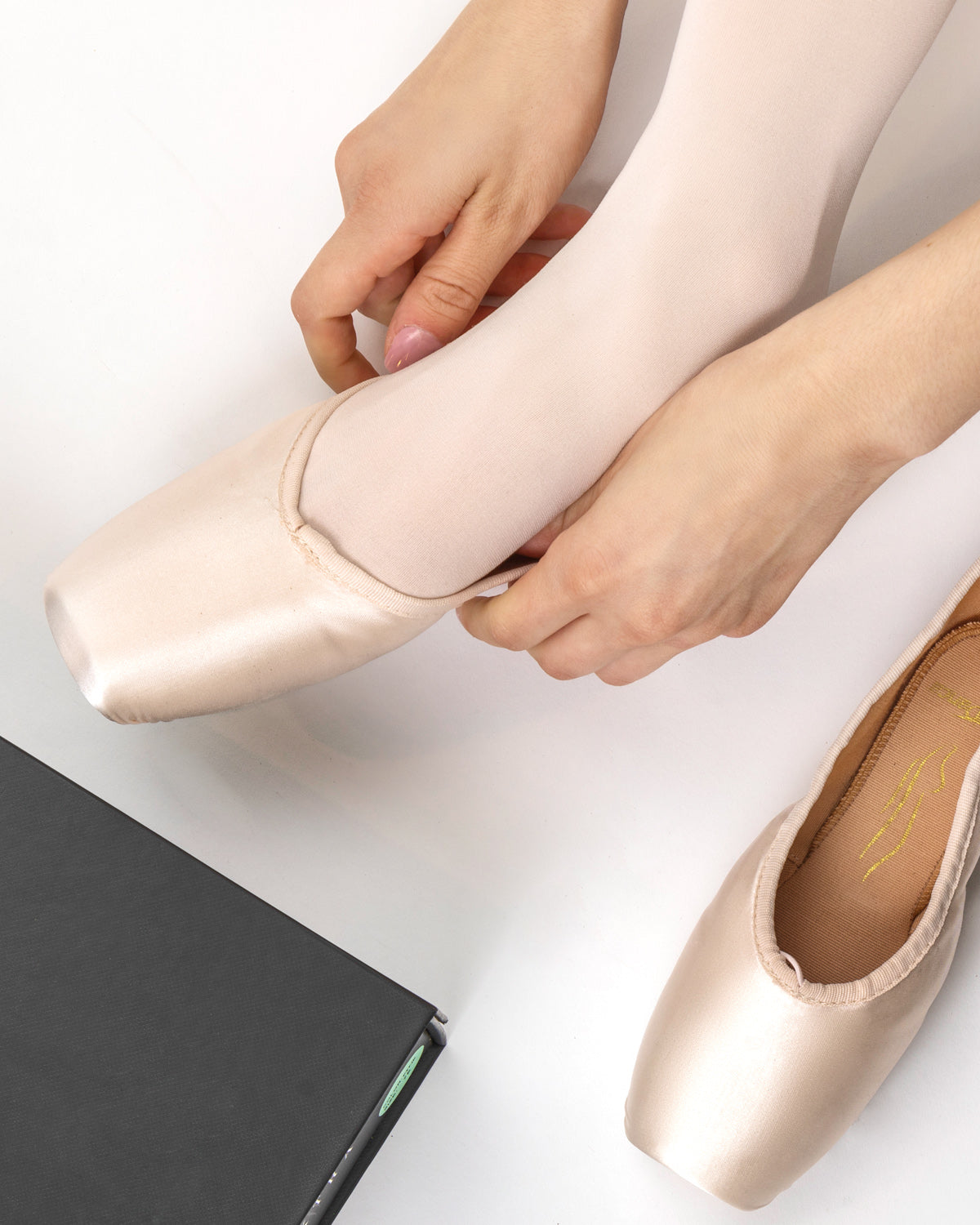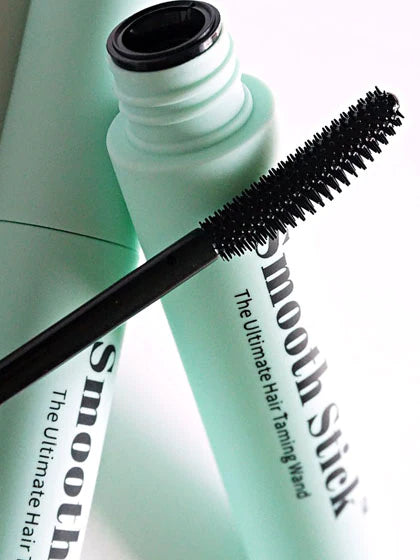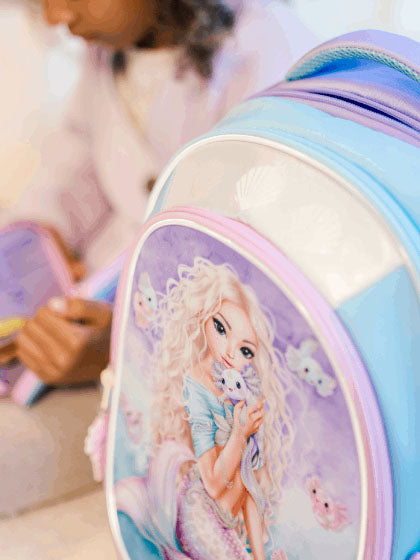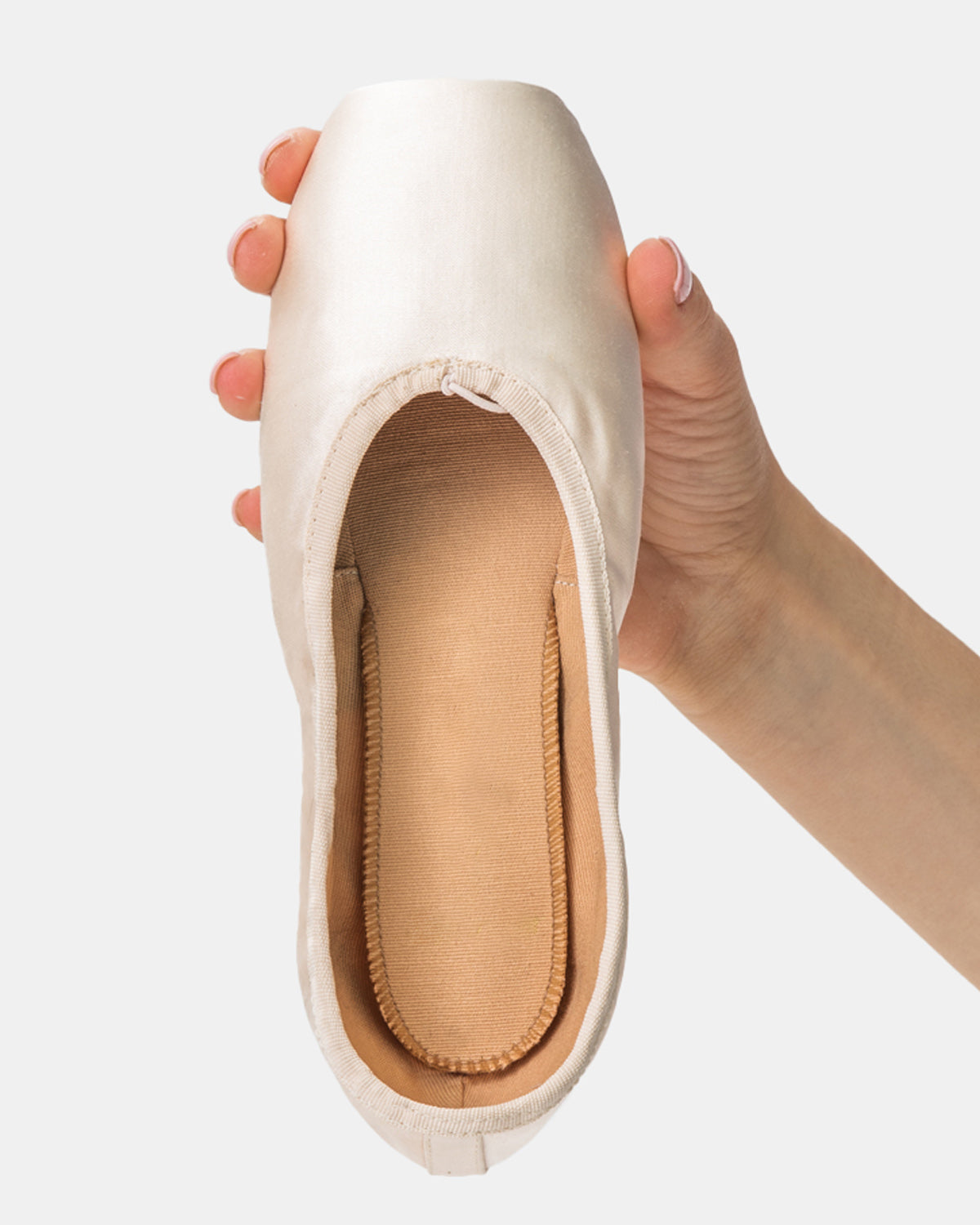Article: MY FIRST POINTE SHOE FITTING WHAT TO EXPECT

MY FIRST POINTE SHOE FITTING WHAT TO EXPECT
Here in Dance World, we have been fitting pointe shoes for over 45 years. We know what pointe shoes work for beginners and professional dancers alike. As professional fitters, we go through extensive training so we know what we’re doing and by now we have a little routine we like to follow.
What to expect:
- We will ask you to remove your shoes and socks and put on ballet socks or tights. This is to make sure that when we do the fitting you are wearing what you will actually wear with your pointe shoes “in real life”. We want the fitting to be as accurate as possible.
- Next, we will perform a quick pre-pointe assessment. Your teacher has already done this to assess your preparedness for pointe training but we weren’t there and we need to get an idea of your strength and range of movement. The fitter may ask you to rise, tendu, and relevé to watch your legs and feet work. This will help the fitter to figure out what style of shoe will suit you best.
- We will help you choose toe protection. Most dancers wear some form of toe protection inside their pointe shoes. What you use can vary depending on your teacher’s advice and personal preference. We have a wide variety of high-quality protective accessories to choose from.
- You will try on lots of shoes until you find the perfect pair!
Don’t be afraid to ask lots of questions; fitting pointe shoes is a two-way street
- The fitter will ask you lots of questions. Pointe shoe fittings can be tricky. There are several different brands and within each brand, several styles of shoe to choose from. Every style is available in different lengths, several width fittings, and different strength levels. There’s no one “pointe shoe for beginners”, some styles suit some feet and some don’t…it’s as simple as that. However, if it’s your first fitting, you have no way of knowing what styles suit you and which ones don’t. It is this that makes fitting pointe shoes correctly so important. You will try lot’s of different styles and that’s good. Take the opportunity to see what you like and how the different shapes and styles feel.
- The fitter will need to see how the shoes fit, how you move in them, can you work in them, and whether they give you adequate support. They will explain everything as they go and give you specific instructions. It is really important to give the fitter as much information as you can. Really think about what they are asking and try to give specific answers. Don’t be afraid to ask lots of questions; fitting pointe shoes is a two-way street that involves communication: shoes can look perfect to a fitter but hurt like hell, remember that you’re the only one who can feel the discomfort. Try not to be nervous and enjoy yourself; you only get one first pointe shoe fitting.
How long will my first pointe shoe fitting take?
Unfortunately, there are no hard and fast rules for this as it differs so vastly from dancer to dancer. We book our appointments in slots of 30 minutes as we find that most people will have found something they love within that time. Some dancers have easy feet and they will finish up in 10 minutes, but others may find the task more challenging and they may require over an hour with the fitter. Don’t worry about this as it’s the fitter’s job to ensure you leave the shop with a shoe that works for you, and we like a challenge. Just make sure to leave yourself enough time to relax and enjoy the fitting.
Why can’t I order pointe shoes online and why can’t someone else buy them for me?
You may be wondering what makes pointe shoes different from other ballet shoes, which can be purchased by anyone who knows your shoe size. I mentioned earlier that there are lots of different styles and fits of pointe shoes, it is impossible to guess what pointe shoe will suit a foot without seeing it and it is unrealistic to think you can guess what type of pointe shoe will work for you if you don’t try it on. You would never buy glasses without an eye test, you should think of pointe shoes the same way.
Do I need to get demi-pointes first?
Not necessarily. Opinions are divided on whether demi-pointe shoes are 100% necessary. They will help you acclimate to the feeling of a pointe shoe and learn to adjust your balance. Demi-pointes can be nearly a pointe shoe for beginners, but remember, you can’t dance on pointe in them!
Can I do anything to prepare for my first pointe shoe fitting?
Yes, you can do several things in preparation for your fitting.
- Make sure you have permission from your ballet teacher to start pointe training before you make an appointment.
- Find out whether your teacher wants you to get demi-pointe or full pointe shoes.
- Make an appointment. This seems obvious, but you would be surprised how many people just show up and unfortunately, sometimes we cannot accommodate walk-ins.
- Cut your toenails before you come in. Sounds weird, I know, but you would be surprised how sore it is to dance on pointe on too-long toenails.
- Bring ballet tights or whatever you will be wearing for pointe classes. It’s important to get the most accurate fit possible.
- If you have worn other pointe shoes or demi-pointe shoes, please bring them with you so that the fitters can see how you have worn them.
If you have any further questions or would like to book a first pointe shoe fitting appointment, please do not hesitate to contact us.
Don’t forget to tag us in your fitting photos and let us know what your first pointes were!






